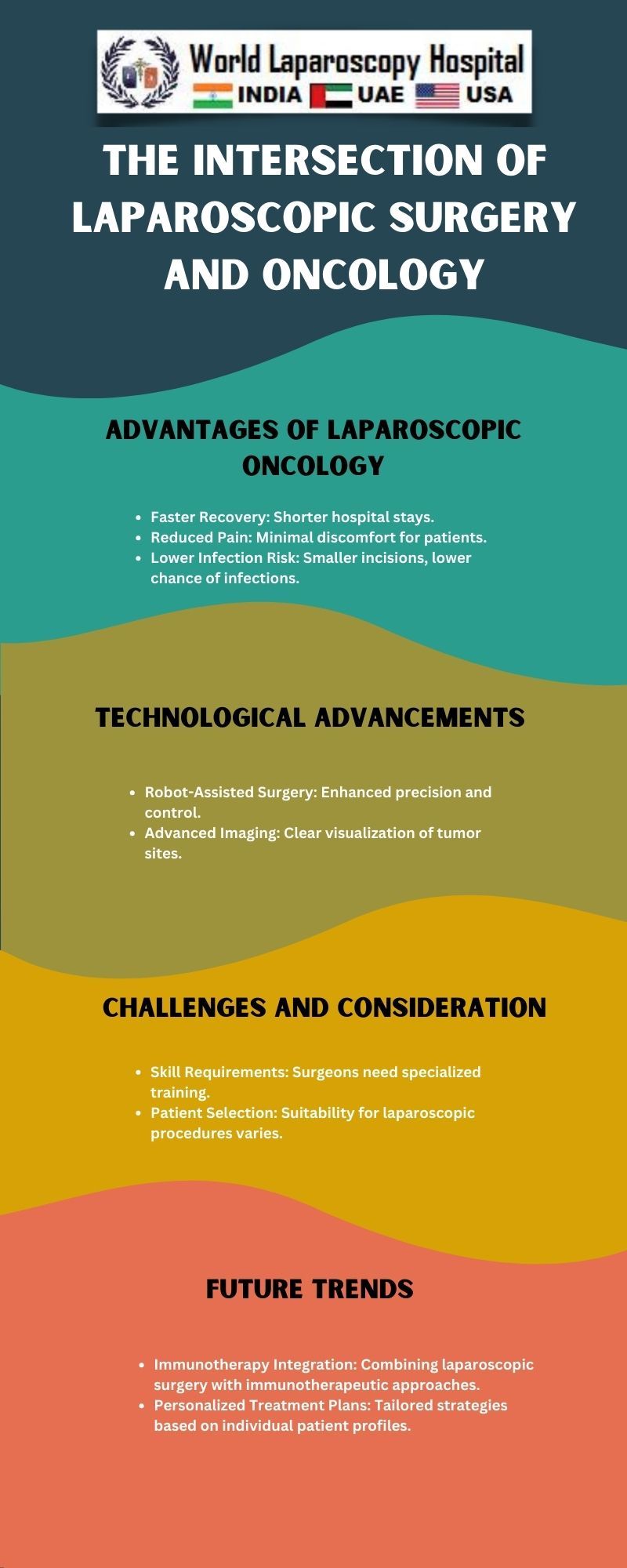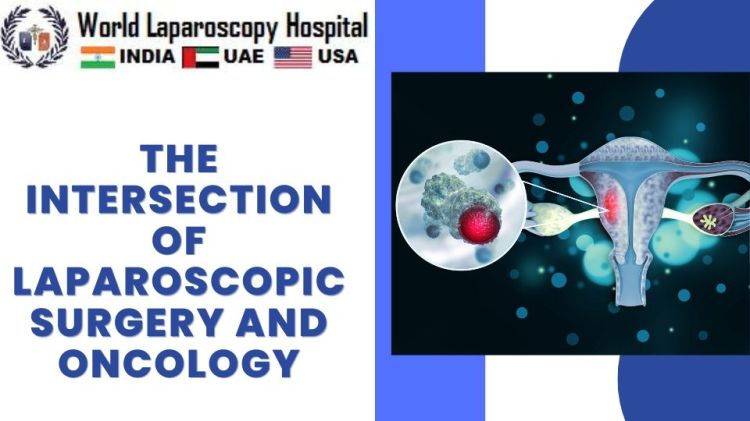The Intersection of Laparoscopic Surgery and Oncology
Introduction:
In the ever-evolving landscape of medical science, the synergy between laparoscopic surgery and oncology has emerged as a revolutionary force in the fight against cancer. Laparoscopic surgery, a minimally invasive technique, has transformed the way surgeons approach oncological procedures. This article delves into the intricate intersection of laparoscopic surgery and oncology, exploring how this combination is reshaping the diagnosis, treatment, and overall outlook for cancer patients.

Understanding Laparoscopic Surgery:
Laparoscopic surgery, also known as minimally invasive surgery or keyhole surgery, involves making small incisions through which a laparoscope (a thin, flexible tube with a camera) and specialized surgical instruments are inserted into the body. This technique contrasts with traditional open surgery, where large incisions are made to access the affected area. The advantages of laparoscopic surgery include reduced blood loss, shorter hospital stays, faster recovery times, and less postoperative pain.
Evolution of Laparoscopic Surgery in Oncology:
The integration of laparoscopic surgery into the field of oncology has been a transformative journey. Initially, laparoscopy found its niche in the diagnosis and staging of cancer. Surgeons could visualize and biopsy tumors with greater precision, minimizing trauma to surrounding healthy tissue. As technology advanced, so did the applications of laparoscopic surgery in oncology.
Diagnostic Advancements:
Laparoscopic techniques have significantly improved the diagnostic capabilities for various cancers, including gastrointestinal, gynecological, and urological malignancies. Surgeons can now explore abdominal and pelvic cavities with greater detail, aiding in the early detection of tumors and allowing for more accurate staging of cancer.
Treatment Modalities:
The application of laparoscopic surgery extends beyond diagnostics to therapeutic interventions. From tumor resections to lymph node dissections, surgeons can perform a myriad of oncological procedures using minimally invasive techniques. This has proven particularly beneficial in cases where the tumor is located in challenging anatomical regions.
Gastrointestinal Oncology:
Laparoscopic surgery has become a cornerstone in the treatment of gastrointestinal cancers. Procedures such as laparoscopic colectomy and gastrectomy offer patients a less invasive option without compromising oncological outcomes. The reduced trauma to the abdominal wall translates to quicker recovery times and improved postoperative quality of life.
Gynecological Oncology:
In gynecological oncology, laparoscopic surgery has revolutionized the management of conditions such as ovarian and uterine cancers. Procedures like laparoscopic hysterectomy and oophorectomy have become standard, providing women with less pain, smaller scars, and faster recovery compared to traditional open surgeries.
Urological Oncology:
The impact of laparoscopic surgery is also evident in urological oncology. Nephrectomies, prostatectomies, and cystectomies can now be performed using minimally invasive techniques, reducing the morbidity associated with traditional open procedures. Patients experience less pain, decreased risk of infection, and shorter hospital stays.
Challenges and Innovations:
While the integration of laparoscopic surgery into oncology has yielded remarkable advancements, challenges persist. The complexity of certain cancer cases and the learning curve associated with mastering laparoscopic techniques can pose hurdles for surgeons. However, ongoing innovations in technology, such as robotic-assisted laparoscopic surgery, are addressing these challenges.
Robotic-assisted laparoscopic surgery combines the precision of robotics with the dexterity of a skilled surgeon. The robotic platform allows for enhanced maneuverability, three-dimensional visualization, and improved ergonomics. Surgeons can remotely control robotic arms, facilitating intricate movements in confined spaces and enhancing the overall precision of cancer surgeries.
Future Directions:
As the intersection of laparoscopic surgery and oncology continues to evolve, future directions are poised to further transform cancer care. Personalized medicine and targeted therapies are likely to integrate seamlessly with laparoscopic techniques, allowing for tailored and precise interventions based on individual patient profiles.
Advancements in imaging technologies, such as intraoperative fluorescence and augmented reality, will provide surgeons with real-time information, improving the accuracy of tumor identification and resection. These innovations hold the promise of minimizing the risk of recurrence and optimizing long-term outcomes for cancer patients.
Conclusion:
The intersection of laparoscopic surgery and oncology represents a paradigm shift in the way we approach the diagnosis and treatment of cancer. This dynamic synergy has not only improved patient outcomes but has also redefined the standards of care in surgical oncology. As technology continues to advance and medical professionals embrace innovative approaches, the future holds exciting possibilities for further refining and expanding the role of laparoscopic surgery in the realm of oncology. Ultimately, this transformative journey is paving the way for a new era in cancer care, one where precision, efficiency, and patient-centric approaches converge to make a lasting impact on the lives of those affected by cancer.
